|
April Article
|
Have you cast your vote for pollinators?
We consult with a lot of people who live in the urban landscape of the Twin Cities. With the pollinator crisis hitting the mainstream press, we are seeing more and more interest in creating natural habitat, which is incredibly awesome. At first, residents in the heart of the city, often feel they just don't have enough space to make a difference. But pretty quickly, we help folks understand that each and every patch of land with native plants helps our pollinators. It's sort of analogous to voting. Each vote counts, and cumulatively, we can come together and have a big and lasting impact!
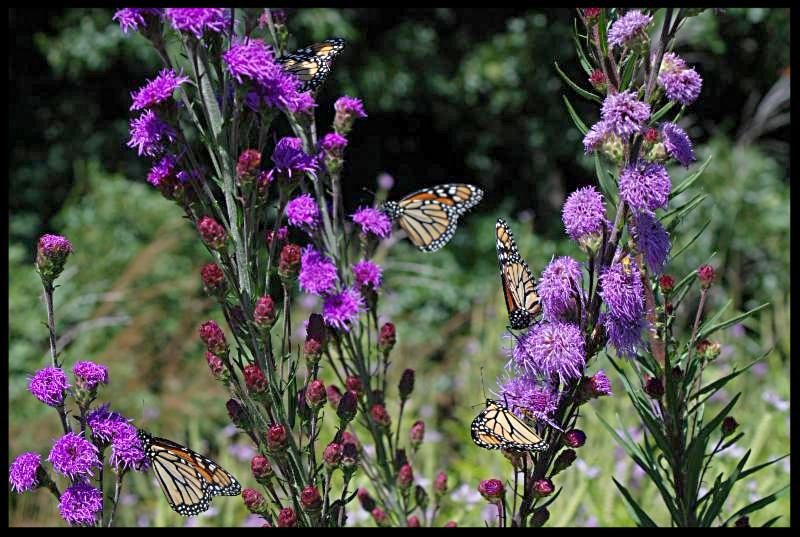
A majority of our first-time clients are grappling with what to do with turf grass. The word is getting out that, ecologically, turf is a big loser. It provides neither food nor shelter for our pollinators and wildlife. It is poor at sequestering carbon and doesn't have a root system strong enough to prevent erosion on shorelines, steeper slopes, and in shaded areas. It also takes up valuable resources - water in the heat of summer, fertilizers and pesticides, and fossil fuels to keep it maintained. Currently, there are around 63,000 square miles of lawn in the United States, so we have a long way to go.
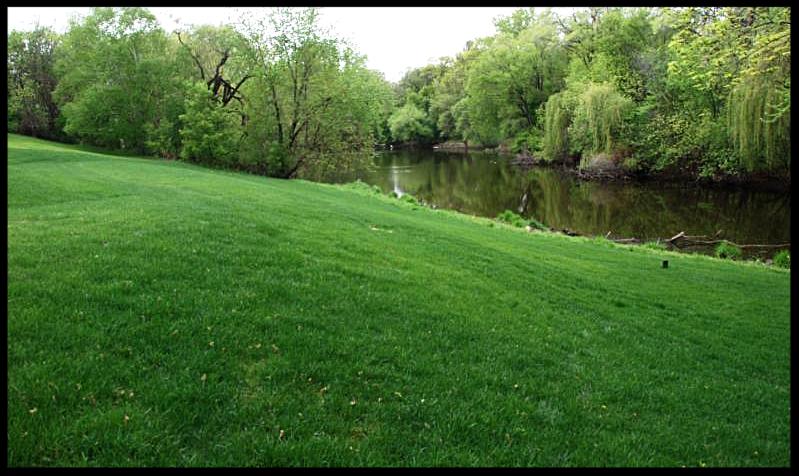
Many small urban lots have oddly shaped patches of turf grass lawns that really don't serve much purpose at all. They can be too small for recreation, annoying to mow regularly, and don't draw much interest aesthetically. Do you have an area of lawn you could revert back to native plants? Imagine a showy prairie or a rain garden hosting a diversity of grasses and flowers that will attract an abundance of critical pollinators. Every patch of native plants counts, and together, we will develop a larger framework of natural areas for our pollinators.

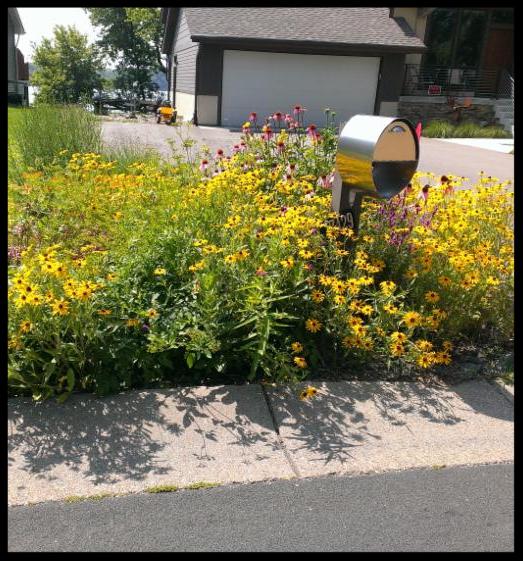
The concept of introducing patches of native plants
 |
|
 |
Adding more shoreline to a neighbor's existing restoration.
|
for
pollinators is catching on. Often, it just has to do with one courageous homeowner taking the leap and being the first in the neighborhood. Creating a demonstration is a powerful way to get others comfortable with an innovative approach. We see this with shoreline restoration all the time. One well-done ecological restoration project on a lake will lead to others. Neighbors see how beautiful the blooming flowers look and how many bees and butterflies they attract, as well as the shoreline stabilization their roots provide. We soon get calls from other shore owners asking about our services.
|
|
|
Three neighbors combine forces to develop a long stretch of restored shoreline!
|
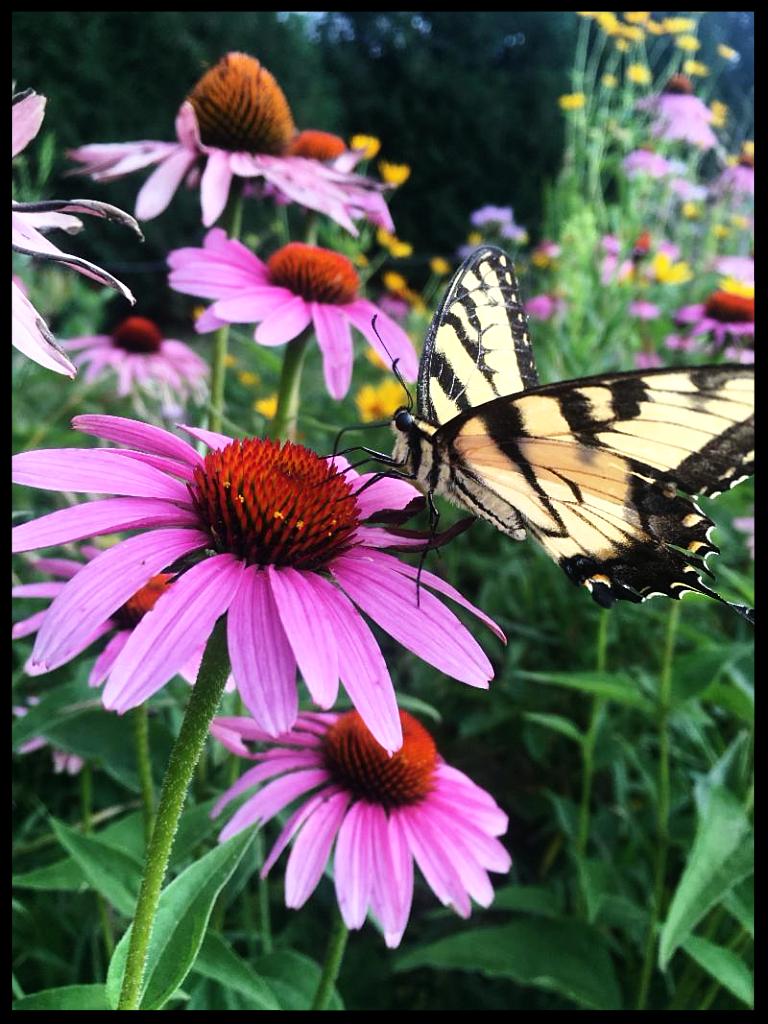 Over the last fifteen years, Natural Shore has installed hundreds of ecological restoration projects around the Twin Cities. Thankfully, we are seeing perceptions change on how people should manage their urban residential lots. Environmental education is helping. More and more folks are realizing that thousands of different species of insects, birds, and animals rely on native plants to survive. Individual sites in the metro area might seem relatively small, but they do add up quickly, forming a patchwork of habitat "stepping stones" throughout the cities.
Over the last fifteen years, Natural Shore has installed hundreds of ecological restoration projects around the Twin Cities. Thankfully, we are seeing perceptions change on how people should manage their urban residential lots. Environmental education is helping. More and more folks are realizing that thousands of different species of insects, birds, and animals rely on native plants to survive. Individual sites in the metro area might seem relatively small, but they do add up quickly, forming a patchwork of habitat "stepping stones" throughout the cities.
Cast your vote for pollinators this spring! You don't need a giant rolling prairie of 150 different species. Just get started with a small patch and a handful of native species that will ensure food throughout the season. You will attract critical pollinators, amazing wildlife, and your neighbors may even poke their heads over the fence and start to ask questions! Cumulatively, we can make a difference.
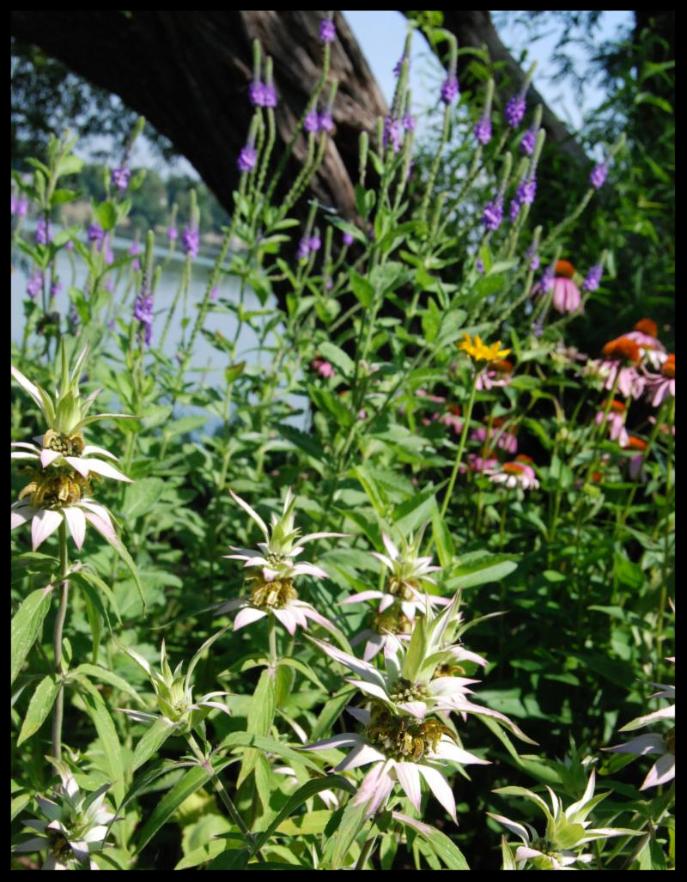
Do you want to be the first in your neighborhood to eliminate turf and plant a pollinator garden or restore your lakeshore? Need help in getting started? Contact our design and installation team at
[email protected]
or visit our retail nursery for Minnesota native plants. All of our plants are grown without pesticides! Another great reason to add a few to your landscape!
|
|
Native Plant of the Month
|

Jack-in-the-pulpit
(Arisaema triphyllum)
Moisture: Moist
Exposure: Full or Partial Shade
Color: Greenish yellow
Blooms: April-June
Height: 1-3 Feet
Jack-in-the-pulpit is an interesting looking woodland plant that blooms in early spring. They have large, oval leaves with three leaflets that end in a point. Their flowers are male or female that have a spadix (inside "Jack") that is covered by a hood-like spathe (the "pulpit"). The stems are green or purple and hairless. The flowers form a cluster of berries that turn from green to a brilliant red. Plant this unique native plant in your woodland!
|
|
Invasive Plant of the Month
|
Garlic Mustard 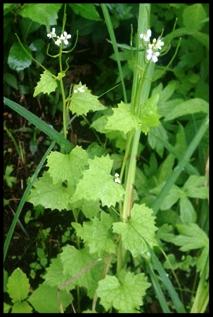
(Alliaria petiolata)
Exposure: Full or Partial Shade
Color: White
Blooms: May- June
Height: 1-4 Feet
Garlic Mustard is a biennial from Europe that forms dense stands in shady, woodland areas. It forms a rosette its first year and flowers its second year. These plants have chemicals that they release into the soil to discourage the growth of other plants. They have heart-shaped, bright green, and toothed leaves that run all the way up the stem. Their small, white flowers are found in clusters at the top of the stem. The flowers form seed pods that break open in the fall, spraying seeds into the surrounding area. The plant is hairless and has a shallow root system. Management strategies include hand pulling, weed whipping, and herbicide treatments to prevent the development of mature seed.
|
Mining bee
 |
|
 |
Photo by Heather Holm
|
Andrena spp.
Range
: worldwide
Habitat
: fields, gardens, woodland edges, open areas
Identification
: These are solitary, medium sized, ground nesting bees. Their bodies are usually covered in gold or white hairs. Many species have bands of hairs on their abdomens.
Pollination
:
Jacob's ladder, milkweed species, wild geranium, butterfly milkweed, black-eyed Susan, golden Alexander, goldenrod species, aster species, boneset, and more!
|
|
|
Our retail nursery will reopen Wednesday May 16th 2018!
Our retail nursery address is:
1480 County Rd. 90 Independence MN 55359
Click and visit our website for current
|
|
Come visit us at these events!
Minnesota Native Plant Society 2018 Annual Symposium
'Old Growth Forests'
Sat. April 21st
Minnesota Landscape Arboretum
Eden Prairie's Arbor Day Walk and Green Fair
Sat. April 28th
10am-12pm
Staring Lake Park
|
|
Spring Pollinators!
The pollinators will be back soon and they are going to need some food! Here are some early bloomers to plant to help out!
1. Wild Geranium
(Geranium maculatum)
2. Marsh Marigold
(
Caltha palustris)
3. Jacob's Ladder
(
Polemonium reptans)
4. Wild Ginger
(
Asarum canadense)
5. Prairie Smoke
(Geum triflorum)
Want to learn more about these native plants? Click Here to visit our website!
|
|
Mystery Plant of the Month!
|
|
Test your plant ID skills!
Here is another native plant that blooms in the spring, can you tell what it is?

Need another clue?
Take a closer look at this part of its interesting looking flower.
|
|
 |
|